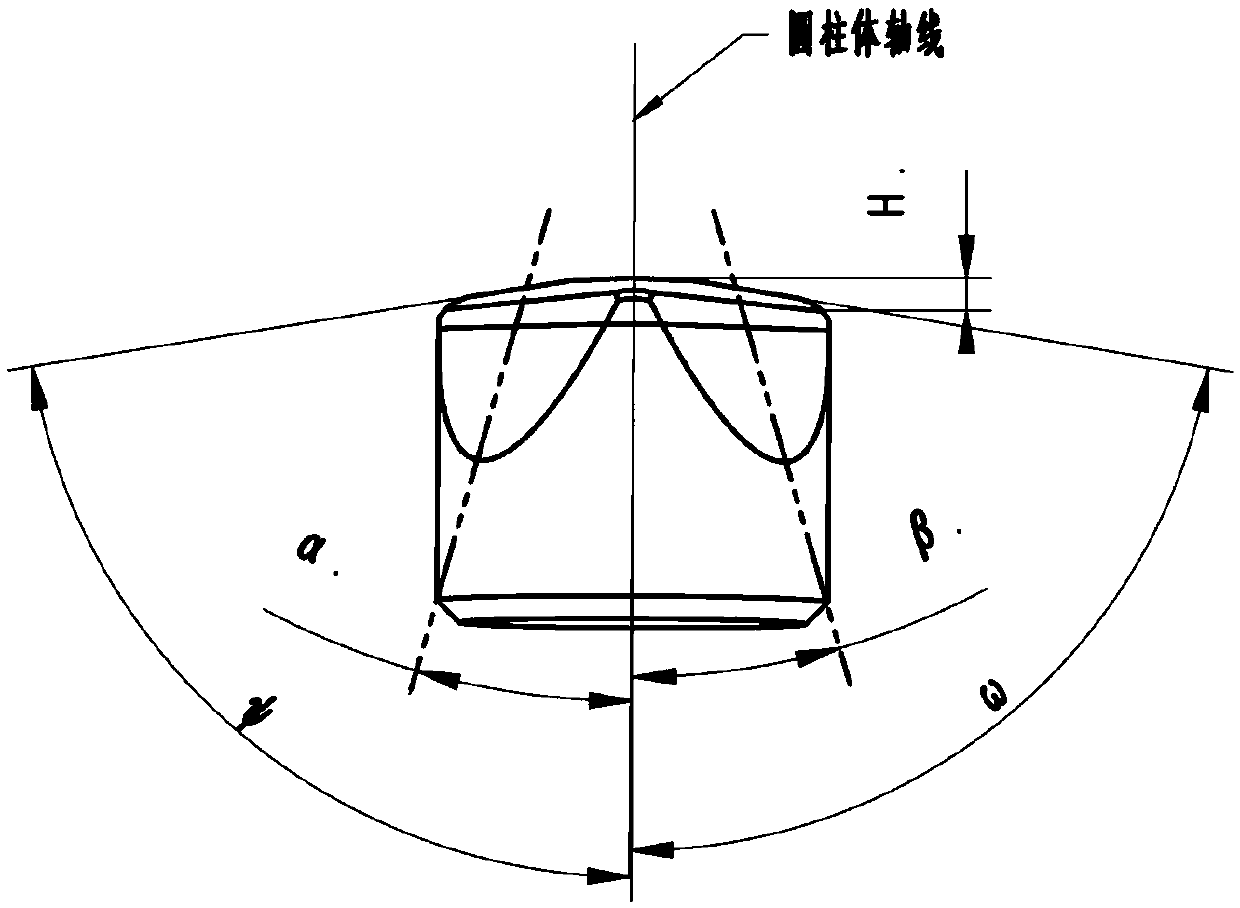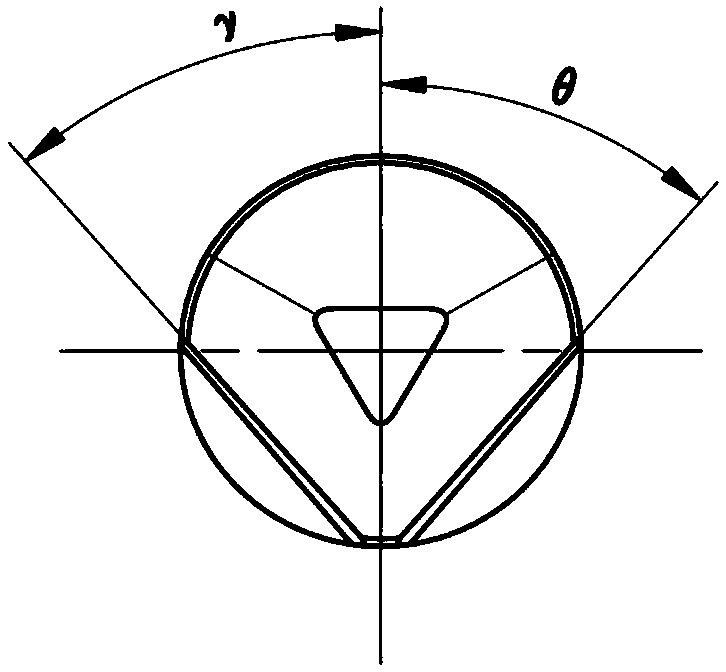Sharp ridge type cutting teeth
A technology of cutting teeth and sharp ridges, which is applied in construction and other directions, can solve the problems of chipping and wear resistance of round teeth, increase drilling costs, and increase the number of drill bits used, so as to improve the anti-grinding ability, improve impact resistance, and improve The effect of rock breaking efficiency
- Summary
- Abstract
- Description
- Claims
- Application Information
AI Technical Summary
Problems solved by technology
Method used
Image
Examples
Embodiment 1
[0027] Embodiment one: if figure 1 , 2 , 3, including a cylindrical tooth column 1 and a tooth crown 9 arranged on the upper end of the tooth column, the tooth column is cemented carbide, the tooth crown or the surface of the tooth crown is composed of a polycrystalline diamond layer, and the thickness of the polycrystalline diamond layer is 1 -6mm, the tooth column and the tooth crown are sintered into one. The tooth crown is composed of three identical transitional surfaces 3a, 3b, 3c which meet obliquely upwards and forwards, and are approximately in the shape of a triangular pyramid, forming three upwardly protruding ridges 2, and the upper ends of the three ridges meet On the top of the tooth crown, from the lower end to the peripheral edge 5 of the tooth crown, the three transitional surfaces are three flat inclined surfaces, and the formed ribs or ridges are linear ridges. The cross-section of the raised ridge is an arc surface with a width of 3 mm. The tooth crown t...
Embodiment 2
[0029] Embodiment two: if Figure 4 As shown, the difference between the second embodiment and the first embodiment is that the lower end of the wedge surface extends to the bottom surface of the body, that is, the angles α and β formed by the two wedge surfaces (4a, 4b) and the axis of the tooth column Both are 0°, that is, the two offset wedge surfaces are parallel to the central axis of the body.
Embodiment 3
[0030] Embodiment three: as Figure 5 As shown, the third embodiment is basically the same as the first embodiment, the difference is that the transition surfaces 3a and 3b are asymmetrical, the transition surface 3a is a convex arc surface, the transition surface 3b is a concave arc surface, and the two wedge surfaces (4a, 4b ) is an asymmetric wedge surface, the angle β formed by the wedge surface 4a and the axis of the tooth column is 25°, and the angle α formed by the wedge surface 4b and the axis of the cylinder body is 30°.
PUM
 Login to View More
Login to View More Abstract
Description
Claims
Application Information
 Login to View More
Login to View More - R&D
- Intellectual Property
- Life Sciences
- Materials
- Tech Scout
- Unparalleled Data Quality
- Higher Quality Content
- 60% Fewer Hallucinations
Browse by: Latest US Patents, China's latest patents, Technical Efficacy Thesaurus, Application Domain, Technology Topic, Popular Technical Reports.
© 2025 PatSnap. All rights reserved.Legal|Privacy policy|Modern Slavery Act Transparency Statement|Sitemap|About US| Contact US: help@patsnap.com



